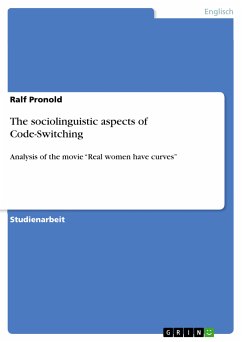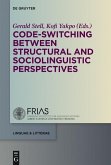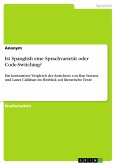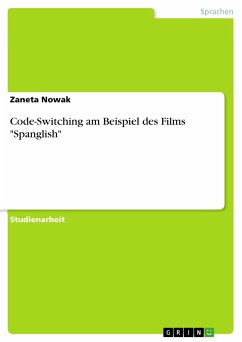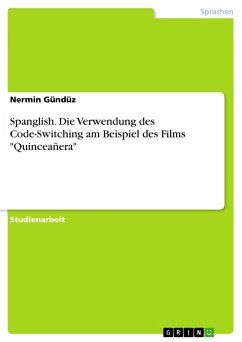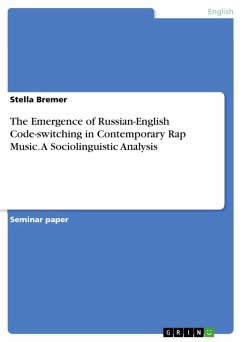Studienarbeit aus dem Jahr 2010 im Fachbereich Amerikanistik - Linguistik, Note: 1,0, Ludwig-Maximilians-Universität München, Sprache: Deutsch, Abstract: Whenever people with different language backgrounds share the same territory or have close relations the linguistic outcome is usually bi- or multilingualism. In such contact situations the languages involved often start to interact and influence each other, which results in a series of phenomena such as borrowing, convergence, pidginization, etc. (Haugen 1978, 21-22). Of all these concepts the one which has probably raised most interest among linguists and researchers is code-switching (CS), the alternate use of more than one language within a single conversation. While formerly this kind of language use was considered rather negatively and as a transitional step in the process of language shift, it is nowadays widely regarded as a vital and stable part of many bilingual communities all over the world (Myers-Scotton 1993, 2). But not only linguists are interested in CS. Filmmakers have also discovered its potential and use it as a creative element in their productions. The overall purpose of this paper is to provide a short overview on the sociolinguistic approach on CS and to show how it is illustrated in contemporary media productions. Therefore, after presenting some of the most important theories of CS in the first part, in the second part I will analyze selected scenes of the movie "Real women have curves". The goal thereby will be to find and explain possible connections between the social situation and the language choice in the respective scenes. Finally a short conclusion shall summarize the main results and ideas.
Dieser Download kann aus rechtlichen Gründen nur mit Rechnungsadresse in A, B, BG, CY, CZ, D, DK, EW, E, FIN, F, GR, HR, H, IRL, I, LT, L, LR, M, NL, PL, P, R, S, SLO, SK ausgeliefert werden.
Hinweis: Dieser Artikel kann nur an eine deutsche Lieferadresse ausgeliefert werden.

